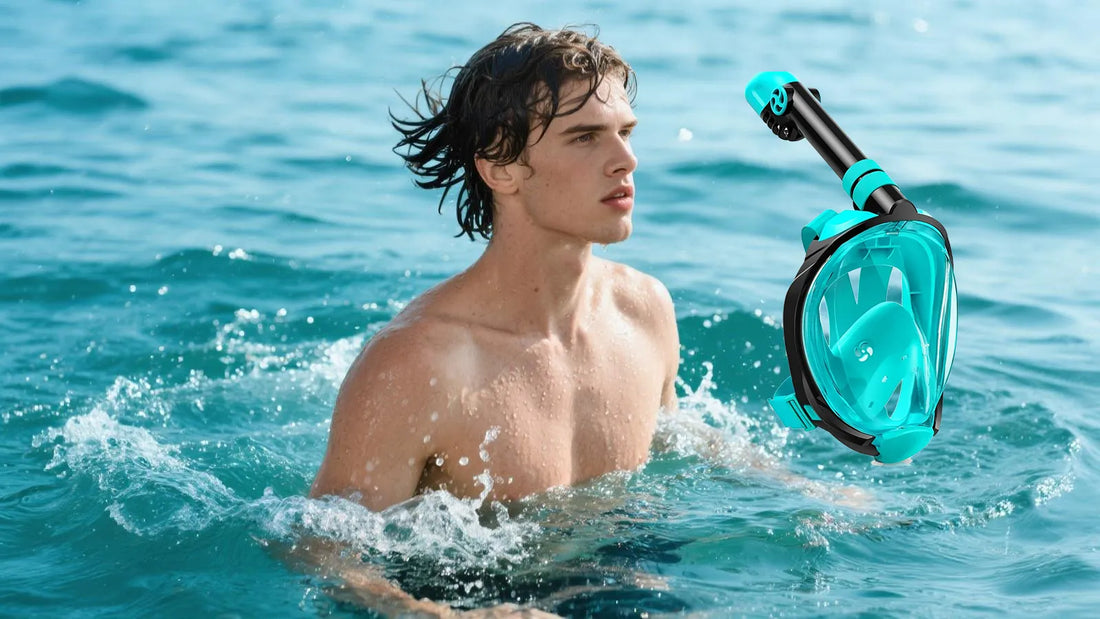Snorkeling is a thrilling way to explore the underwater world, offering a glimpse into vibrant marine life and stunning coral reefs. Whether you're a beginner or an experienced adventurer, understanding how snorkeling is done can enhance your experience and ensure your safety. This guide will walk you through everything you need to know to get started.
What Is Snorkeling?
Snorkeling is a water activity that allows individuals to observe underwater life while staying at the surface. It involves using a snorkel, a mask, and fins to breathe and move efficiently in the water. Unlike scuba diving, snorkeling does not require extensive training or heavy equipment, making it accessible to people of all ages.
Essential Snorkeling Equipment
Before diving into the water, it's crucial to have the right gear. Here are the essential pieces of equipment for snorkeling:
- Snorkel: A tube that allows you to breathe while your face is submerged in water.
- Mask: Provides a clear view underwater and protects your eyes from saltwater.
- Fins: Help you move through the water with ease and reduce fatigue.
- Wetsuit or Rash Guard: Keeps you warm in cooler waters and protects your skin from the sun and marine life.
Choosing the Right Location
Selecting the right location is key to a successful snorkeling experience. Look for calm, clear waters with minimal currents and abundant marine life. Popular snorkeling spots include coral reefs, lagoons, and protected marine parks. Always check local weather conditions and water visibility before heading out.
Basic Snorkeling Techniques
Mastering a few basic techniques can make your snorkeling experience more enjoyable and safe. Here are some tips to get you started:
- Breathing: Practice breathing through the snorkel while keeping your face in the water. Take slow, deep breaths to avoid hyperventilation.
- Floating: Use your fins to maintain a horizontal position at the surface. Relax your body to conserve energy.
- Clearing the Snorkel: If water enters the snorkel, exhale sharply to clear it. This technique is essential for maintaining a steady airflow.
- Equalizing Pressure: When diving below the surface, gently pinch your nose and blow to equalize the pressure in your ears.
Safety Tips for Snorkeling
Safety should always be a priority when snorkeling. Follow these guidelines to ensure a safe and enjoyable experience:
- Never Snorkel Alone: Always snorkel with a buddy or in a group to ensure help is available if needed.
- Stay Aware of Your Surroundings: Keep an eye on the weather, water conditions, and marine life. Avoid touching or disturbing underwater creatures.
- Know Your Limits: Don't push yourself beyond your comfort level. If you feel tired or uncomfortable, return to shore.
- Use Sun Protection: Apply waterproof sunscreen and wear protective clothing to prevent sunburn.
Environmental Considerations
Snorkeling offers a unique opportunity to connect with nature, but it's essential to be mindful of your impact on the environment. Avoid touching or stepping on coral reefs, as they are fragile and easily damaged. Refrain from feeding marine life, as it can disrupt their natural behavior. Always dispose of trash properly and respect local regulations.
Improving Your Snorkeling Skills
As you gain experience, you may want to improve your snorkeling skills. Consider taking a snorkeling course or joining a guided tour to learn advanced techniques and explore new locations. Practicing regularly will help you become more confident and efficient in the water.
Snorkeling for Different Skill Levels
Snorkeling is a versatile activity that can be enjoyed by people of all skill levels. Beginners can start in shallow, calm waters, while more experienced snorkelers can explore deeper areas and more challenging conditions. Always choose locations and activities that match your abilities.
Health Benefits of Snorkeling
Snorkeling is not only fun but also offers numerous health benefits. It provides a low-impact cardiovascular workout, improves breathing and lung capacity, and reduces stress. Being in nature and observing marine life can also boost mental well-being and promote relaxation.
Planning Your Snorkeling Adventure
Proper planning is essential for a successful snorkeling trip. Research your destination, check the weather forecast, and ensure you have all the necessary equipment. Consider booking a guided tour if you're unfamiliar with the area or want to learn more about the local marine life.
Snorkeling is a fantastic way to explore the underwater world and connect with nature. By understanding how snorkeling is done and following the tips in this guide, you can enjoy a safe, enjoyable, and memorable experience. So grab your gear, dive in, and discover the wonders that lie beneath the surface!

